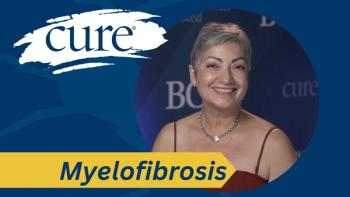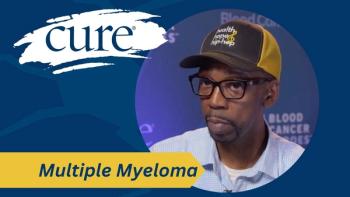Patients with blood cancer who were given Orca-T to prevent post-transplantation graft-versus-host disease (GVHD) tended to have better survival than those treated with post-transplant cyclophosphamide (PTCy), according to recent findings presented at the 2024 Transplantation & Cellular Therapy Meetings.
Of note, all patients had matched unrelated donors and were undergoing myeloablative conditioning (MAC), which delays an immune response to the donor cells.
- Compared to traditional post-transplant cyclophosphamide (PTCy), Orca-T tends to result in better survival rates and lower rates of post-transplant complications.
- The study, presented at the 2024 Transplantation & Cellular Therapy Meetings, found that Orca-T led to a 77% relapse-free survival rate and a 94% overall survival rate, compared to 62% and 77% respectively with PTCy.
- These findings highlight the importance of identifying effective treatments to improve outcomes for patients undergoing stem cell transplantation, where over 40% face mortality within three years due to various complications.
- Ongoing research, including the Orca Precision-T trial, aims to further evaluate Orca-T's effectiveness in different patient populations and refine its use in clinical practice.
The relapse-free survival (RFS; time patients lived without experiencing relapse) rate was 77% in the cohort of patients who received Orca-T vs 62% in the cohort of patients who received PTCy. Furthermore, the non-relapse mortality (NRM; post-transplant death without relapse or recurrent diseaes) rates with Orca-T and PTCy were 3% and 16%, respectively, and the overall survival (OS; percentage of patients who are still alive) rates were 94% and 77%, respectively.
“The positive impact [of Orca-T] on RFS, NRM and OS highlight the importance of identifying treatment approaches that may be beneficial across all key transplant outcomes in addition to the reduction of [chronic] GVHD,” Dr. Alexandra Gomez Arteaga, lead study author and an assistant professor of Medicine in the Division of Hematology and Medical Oncology at Weill Cornell Medicine/New York-Presbyterian Hospital in New York, New York, stated in the presentation.
Although progress has been made in the treatment of patients with hematologic malignancies requiring allogeneic stem cell transplantation, over 40% of patients who receive allogeneic hematopoietic stem cell transplant (HSCT) die within the first three years of receiving this treatment, with most deaths caused by primary relapse (53%), infection (14%), GVHD (13%) and organ failure (13%). However, Orca-T cell therapy may improve clinical outcomes for these patients.
Study Findings
In the phase 3 BMT CTN 1703 trial, significantly higher GVHD-free RFS rates were observed with PTCy/mycophenolate mofetil/tacrolimus prophylaxis compared with standard prophylaxis in patients who received reduced-intensity conditioning.In the myeloablative setting, however, outcomes in the PTCy arm were not different than those with tacrolimus plus methotrexate. Despite these findings, the use of PTCy in the MAC setting has increased, and NRM and relapse risk continue to be drivers of PTCy progression.
This retrospective study compared historical outcomes with Orca-T vs PTCy in patients who received peripheral blood stem cell (PBSC) grafts and MAC. The Orca-T cohort (111 patients) used clinical data from a multicenter phase 1b trial of Orca-T plus single-agent tacrolimus, which had primary end points of the incidence and timing of primary graft failure and the incidence and timing of moderate to severe (grade 3/4) acute GVHD.
Patients were at least 18 years of age, with a median age of 49 years (range, 20-65). Primary diseases included acute leukemia in complete remission (CR; no detectable disease) or CR with incomplete hematologic recovery (CRi; acute myeloid leukemia [AML; 45.9%], acute lymphoblastic leukemia [ALL; 33.3%], and mixed phenotype [1.8%]), myelodysplastic syndrome (MDS; 15.3%), or chronic myeloid leukemia (CML; 3.6%) treated with Orca-T between 2019 and 2022.
Patients were required to have 8/8 matched related or unrelated donors, and 50.5% of patients had matched related donors. Forty-seven percent of patients were female, and patients had a hematopoietic cell transplantation–specific comorbidity index (HCT-CI; a scale used to predict prognosis) of up to 4 and a Karnofsky performance score (KPS) of at least 70, indicating that they can do most of their daily tasks independently. The median follow-up in this trial was 17 months.
Investigators found no difference in outcomes between matched unrelated donors and matched sibling donors with Orca-T in this trial.
Data from patients who underwent Orca-T treatment were compared to another cohort (83 patients), which consisted of data from a publicly available dataset from the Center for International Blood & Marrow Transplant Research (CIBMTR) database, which included 284 MUD transplantations with PTCy GVHD prophylaxis.
Patients were at least 18 years of age, with a median age of 52 years (range, 18-71). Primary diseases included ALL (26.5%), AML (49.4%), and MDS (24.1%). Forty-nine percent of patients were female, and all patients had 8/8 matched unrelated donors. The primary end point of this dataset was OS, and patients had a median follow-up of 12 months. The limitations to this CIBMTR dataset were that it included only matched unrelated donors, the treatment time frame was from 2011 to 2018, and the incidence of chronic GVHD (cGVHD) was not reported by grade, so investigators were unable to delineate the percentages of moderate and severe GVHD in this population.
The key outcomes assessed in this retrospective analysis were RFS, NRM and OS.
In the myeloid subgroup of the Orca-T cohort (48 patients), the median age was 54 years (range, 20-64) and the median follow-up was 15 months. Forty-eight percent of patients were female, and 58% had HLA-matched related donors. Additionally, 77.1% had ALL and 22.9% had MDS.
In the myeloid subgroup of the PTCy cohort (61 patients), the median age was 57 years (range, 20-71) and the median follow-up was 12 months. Forty-nine percent of patients were female, and 100% had HLA-matched unrelated donors. Additionally, 67.2% had ALL and 32.8% had MDS.
In the myeloid subgroups of the Orca-T and PTCy cohorts, the respective RFS rates were 86% and 63%, the respective NRM rates were 0% and 17%, and the respective OS rates were 100% and 76%.
Investigators found that older age was associated with higher NRM rates with PTCy but not with Orca-T. At 12 months, the NRM rates in patients with myeloid diseases who were younger than 55 years of age were 0% and 8.5% in the Orca-T and PTCy subgroups, respectively. These rates were 0% and 24%, respectively, in patients with myeloid diseases who were older than 55 years of age.
Limitations of this research include its retrospective, nonrandomized design. In the future, investigators plan to evaluate Orca-T vs PTCy in the MAC setting in contemporary homogenous patient populations that include 8/8 matched related and unrelated donors and comparable PBSC donor sources.
Long-term follow-up of this future research at two years and beyond will further demonstrate the differences in key clinical outcomes between treatment with Orca-T and PTCy, including relapse, GVHD, infections, organ toxicities, engraftment syndrome and length of hospitalization and hospital readmissions.
“Acknowledging the limitations of historical comparisons and retrospective analyses, Orca-T could potentially provide improved outcomes as compared with PTCy-based MAC with PBSC graft in patients with acute leukemia or MDS,” Gomez-Arteaga concluded.
Continued Research
The randomized phase 3 Orca Precision-T trial is currently enrolling patients across the United States with undifferentiated AML, ALL or mixed-phenotype acute leukemia who are in CR or CRi to their last line of therapy, as well as patients with high-risk, therapy-related MDS, including those with active disease at the time of transplant. Patients must be planned to undergo myeloablative allogeneic HSCT including one of the following MAC regimens: busulfan plus fludarabine and thiotepa, total body irradiation (TBI) plus etoposide, or TBI plus cyclophosphamide. Additionally, patients must be ages 18 to 65 and have an 8/8 matched related or unrelated donor, an HCT-CI of up to 4, a KPS of at least 70, and adequate organ function.
Patients will be randomly assigned to receive either Orca-T plus single-agent tacrolimus prophylaxis (87 patients) or standard unmanipulated allograft plus dual-agent tacrolimus and methotrexate prophylaxis (87 patients). cGVHD-free survival will serve as the primary end point of the trial, and secondary end points will include GVHD-free RFS, moderate-to-severe cGVHD and RFS.
For more news on cancer updates, research and education, don’t forget to subscribe to CURE®’s newsletters here.





